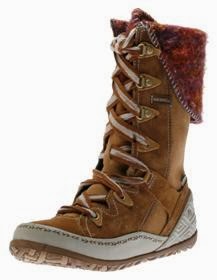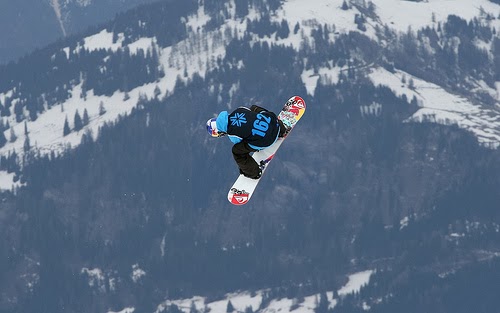After the holiday season ends, most people shift their thoughts forward to the warmer days of spring. However, in many places across the country, snowfall and winter conditions continue well past the holidays, which means plenty of outdoor cold weather activities. In some places, skiing and snowboarding remain in full swing all year. Veterans of the slopes in ski towns all over the United States relish the days following January 1 when most tourists return home and they can enjoy uncrowded runs through fresh powder.
But fewer people on the slopes isn’t just a blessing for the masters of the mountain—this time of year is also great for beginners heading out on their first ever skiing or snowboarding trip.
Before any newbie skiers or snowboarders decide to pack up and head for the nearest ski resort, they need to understand some basics of planning the perfect ski or snowboard vacation. Below we will discuss:
- Some of the best American destinations for first-timers to take a skiing or snowboarding trip
- Essential gear and clothing you’ll need
- Rules and etiquette to make your first trip to the slopes as safe, fun, and successful as possible
Let’sbegin our journey, shall we?
Places to Go
There are plenty of mountainous regions and ski towns throughout the U.S., such as Jackson Hole, Wyoming, where expert skiers and snowboarders can test their limits on near-vertical drops and tricky backcountry terrain. Luckily for people heading out on their first skiing or snowboarding trip, there are also some great places across the country where beginners of any age can learn to carve their way down the snowy slopes. The best places to learn how to ski or snowboard in the U.S. are:
Northstar provides first-timers on a skiing or snowboarding vacation multiple options when it comes to learning how to master the slopes. Through the Northstar Teaching System, beginners can enroll in the Northstar Ski + Snowboard School where students learn and progress on small to medium riding features in the Big Easy beginner area. Private and small group lessons are available along with specialized snowboarding instruction through the Burton Snowboard Academy and Burton Learn-to-Ride Program. Northstar also offers ski and snowboard students the opportunity to track their progress online through the EpicMix Academy.
Located just 65 miles east of Boston, Wachusett Mountain is a favorite ski and snowboard option for people residing in and around the metro area. A section known as Ollie’s Area features a 10% grade, providing the perfect training hill for first-time skiers and snowboarders. Wachusett Mountain offers multiple programs for beginners, including a Polar Kids program for children ages 4-12 as well as one to three-day beginner packages such as “Learn to Turn” and “Return to Learn.”
Breck’s Ski and Ride School provides training and skill instruction for skiers and snowboarders in beginner, intermediate, expert, private, and even specialty courses. Breckenridge Ski Resort has dedicated over 10% of its total terrain to beginner trails, giving first-timers plenty of diversity when it comes to practicing their newly acquired skiing and snowboarding skills. Check their website for an outline of a typical day in their children’s ski school along with some tips for parents who plan to enroll their kids in skiing or snowboarding lessons.
Utah is home to some amazing ski and snowboard runs, and Deer Valley Resort in Park City is no exception. Beginners at Deer Valley can take advantage of the resort’s Gold Standard of Instruction, which ensures that students of all ages will receive training from professionally trained ski and snowboard instructors. For children, instruction is broken down by age group into the Fawn, Bambi, Reindeer, Adventure, and Teen clubs. Adults learning to ski or snowboard can work individually with certified Telemark and cross country instructors to perfect the basics and even use Dartfish video analysis technology to observe and compare their skills to other skiers and snowboarders.
Don’t see a ski resort in your area on this list? Don’t worry. There are plenty of places to ski or snowboard around the country to choose from.
Proper Ski/Snowboard Gear and Clothing
The base clothing you wear on the slopes works for both skiing and snowboarding with a few minor differences. The difference between the two activities is more obvious when it comes to equipment. Here’s what you will need in terms of gear and clothing for a trip into the snowy wilderness:
Base Layer
Snug, moisture-wicking undergarments and base layers are very important because they keep you dry. This base layer acts as a barrier between your sweaty skin and your thick, absorbent snow pants and jacket. Regardless of the temperature or conditions on the mountain, we always recommend a good base layer.
Note: Don’t choose cotton for your base layer—it holds on to moisture rather than wicking it away, which not only makes you uncomfortable but can be dangerous in very cold weather.
Insulation Layer
While your base layer keeps you dry, your insulation layer keeps you nice and warm. Made of “fluffier” fabrics like fleece or feather down, heat is trapped within the roomier air pockets of your insulating layer.
Depending on the weather, you might be able to forgo this one. Bring it just in case.
Jacket
If it’s your first time skiing or snowboarding, you’ll probably be falling a lot, which is when a decent jacket comes in handy to cushion the blow and keep the powder from soaking down to the skin. Make sure your jacket, which is your third and outermost layer, is waterproof and protects against cold wind.
Pants
With your base layer keeping you warm and dry, the main purpose of snow pants is to keep snow and moisture out. The best snow pants are made using Gore-Tex or similar materials.
Hat
Although your mother might tell you that it’s much more, scientists have found that you lose approximately 10% of your body heat through your head. Still, that percentage is enough to warrant wearing a hat when spending an extended amount of time outdoors in cold weather. Try to find a beanie that will at least cover your ears. All the better if it covers your cheeks as well.
Gloves
The material your gloves are made of makes a huge difference, so go with a pair made with waterproof synthetic materials and good insulating material like down or Thinsulate. Look for gloves with good length and coverage to keep snow out of your sleeves.
Goggles/Sunglasses
Even if it’s overcast when you hit the slopes, the reflection of the sun’s rays off the bright white snow can cause serious damage to your eyesight. When you are skiing and snowboarding, protective goggles also protect your eyes from flying objects, debris, and snow.
Socks
While wool socks keep you warm in most situations, once they get too wet, it’s a whole different story. Wool socks and snow activities don’t mix. Socks designed specifically for skiing or snowboarding consist primarily of synthetic materials, have a compressed fit, and provide proper ventilation.

Footwear
Any time you head out into snowy terrain, you want footwear that keeps your feet stay warm and dry. Stick with a high-quality snow boot, like the Merrell one pictured
, that feature water-resistant materials, a gusseted tongue, good ankle support, and a tough rubber outsole for traction. These are the shoes you’ll wear around when not skiing or snowboarding.
Note: Skip the Uggs for this purpose, which typically offer zero traction.
Skiing/ Snowboarding Equipment
- Skis or snowboard
- Ski/snowboard boots
- Helmet
- Ski poles (if necessary)
- Snowboard bindings (if necessary)
- Ski/snowboard equipment bags
Miscellaneous Gear
Some other items you should bring along include:
- Sunscreen
- Chapstick
- Camera
- Tissues
- Earmuffs
- Disposable hand/foot warmers
Proper Skiing and Snowboarding Etiquette
Like many activities that are practiced by a relatively tight-knit community of enthusiasts, skiing and snowboarding involve a set of rules and regulations that participants adhere to while they are out on the slopes.
Some rules are straightforward—keep your ski poles below your waist at all times, don’t leave any trash behind on the mountain. Others, such as trail obstruction and determining who has the right of way, can be a bit more confusing. Below are some basics to ski and snowboard etiquette that first-timers should keep in mind.
- Adhere to the resort’s rules.
Pay attention to signs, closed off areas, and markings for out-of-bounds areas. All of these have been put in place by the resort to help maintain a fun and safe environment for everyone.
- Don’t stop in blind spots.
Whether you are making your way down a hill or through a terrain park, stopping in a blind spot can place you and the riders behind you in danger.
- Give downhill riders the right of way.
As a beginner you are probably much slower than other people on the mountain—and that’s perfectly fine! But pay attention to faster skiers or snowboarders approaching from behind, most of whom will likely let you know which side they’ll be passing you on by saying “On your left!” or “On your right!”
People learning to ski or snowboard may find it difficult to stay in control of their equipment and the direction in which they are going, but doing so is a vital part of proper etiquette on the slopes. The first thing many ski and snowboard schools teach first-timers is how to stop, which goes a long way to preventing runaway skiers and snowboarders from causing problems down the mountain.
Don’t stress this one—you’ll be practicing on gentler slopes until you feel confident enough in your ability to maintain control and stop, right? Don’t progress to steeper runs until you are confident.
Concluding Thoughts
Skiing and snowboarding offer a great workout mixed with plenty of thrills and family-friendly adventure. Both activities are a ton of fun and easier than you think, so if you’re even the tiniest bit interested, strap on those boots and head for the slopes. Stay safe and have fun!
Resources:
http://www.liftopia.com/blog/top-4-places-learn-to-ski-snowboard/
http://www.bostonglobe.com/lifestyle/2013/01/11/great-places-learn-ski/dSfxsP5FoZL1hCi5yNpfhO/story.html
http://voices.yahoo.com/top-5-ski-resorts-beginners-us-5000662.html
http://welove2ski.com/beginner-skier-shopping-list
http://www.liftopia.com/blog/beginner-ski-gear-guide/
http://www.examiner.com/article/basic-snowboarding-etiquette












